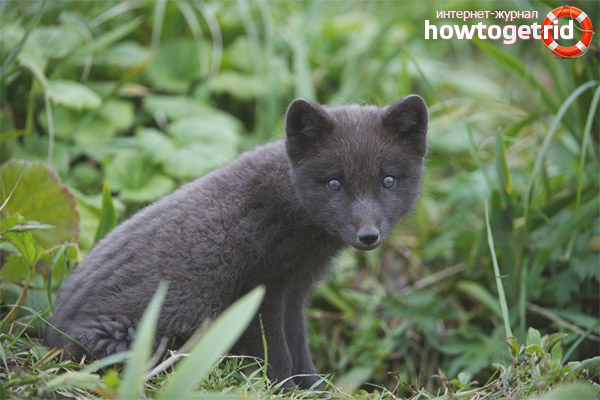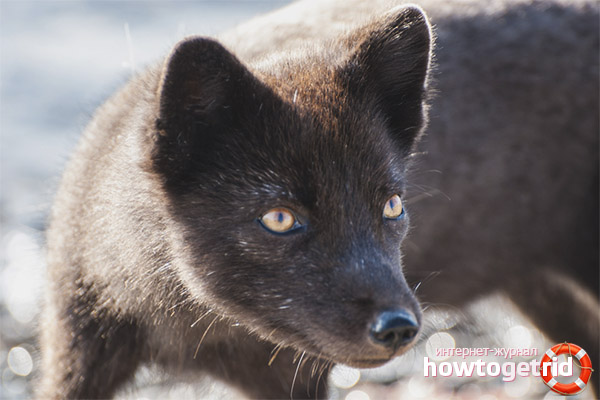The content of the article
The blue fox is the rarest of all fur-bearing animals. That is why hunting these animals in our time is strictly prohibited by law. However, a solution to this problem was found, today the blue fox is quite actively and quite successfully bred in captivity, while having the opportunity to get valuable fur without breaking the law. Currently, these animals are the most common fur animals that are kept in cages.
The appearance of the blue fox
Blue fox is a small predatory animal belonging to the canine family. In appearance, the arctic fox is very similar to a fox, the difference is, perhaps, only in the color of the fur, as well as in size - the arctic fox is slightly smaller than the red predator. In addition, this canine representative is more squat than a fox, and has a slightly shorter muzzle. The ears of the arctic fox have a rounded shape; they are practically invisible behind the winter coat of the animal. This prevents the ears from frostbite in the cold season.
The average length of the blue fox is about half a meter. The maximum length in this case reaches 75 centimeters, excluding the tail. The tail, on average, adds another quarter meter to the length of the body. Despite the fact that the size of the Arctic fox at first glance is quite impressive, the animal has a relatively small body weight. Adult males weigh a maximum of 3.5 kilograms, and females weigh only 3 kilograms.
In the spring, around March-April, foxes begin to molt. This process continues until about June. In autumn, molting begins again, usually in September and lasts until December. Experts say that the most beautiful and high-quality blue fox fur is observed in winter, mainly in January and February.
Blue fox habitat
Blue fox lives in the tundra. For life, these animals choose mainly open hilly areas. They live in burrows, which they organize on their own, digging out entire underground tunnels in sand hills or on the coast. To equip the burrows, the arctic fox always selects a location not far from the water. Unfortunately, there are not many places in the tundra where it is possible to make a hole, so animals can use the same tunnels for a very long time, for decades, and in some cases even hundreds, leaving housing for future generations.
What does it eat?
Despite the fact that the fox is considered to be a predator, a variety of plants are also included in the diet of this beast. Of course, the basis of the blue fox menu is birds, as well as various small rodents. This representative of the canids does not refuse fish, and he can even eat the one that he washed ashore. Arctic foxes are, in a sense, scavengers, because at times they eat up the remnants of food thrown by polar bears. Quite often steal prey from hunters, pulling it directly from the traps or snares.
Giving itself food, the arctic fox mainly uses well-developed hearing and sense of smell. Canids rely less on sight.You can determine the Arctic fox not only in appearance, but also in a kind of yapping, which strongly resembles the voice of an ordinary domestic dog.
How to keep at home?
Raising a blue fox at home is not such an easy task, so the future farmer must first drown all the subtleties of such an activity. This enterprise will be successful only if all the features are taken into account. It is important to pay attention to all factors, starting with the location of the farm, the organization of cells and aviaries, and ending with the nutrition and breeding of young animals. It is also very important to understand how the new generation of arctic foxes inherits the color of fur in order to each time improve the quality of their fur coat.
As a place to place a farm, it is recommended to choose territories located as far north as possible. Thus, from animals you can get the highest quality fur. Of course, it is best to place the enterprise in the tundra. The terrain is best even and dry. It is good if the area around is surrounded by trees and shrubs, they will provide protection from the winds, as well as create a good environment for keeping animals.
Video: blue fox











Submit